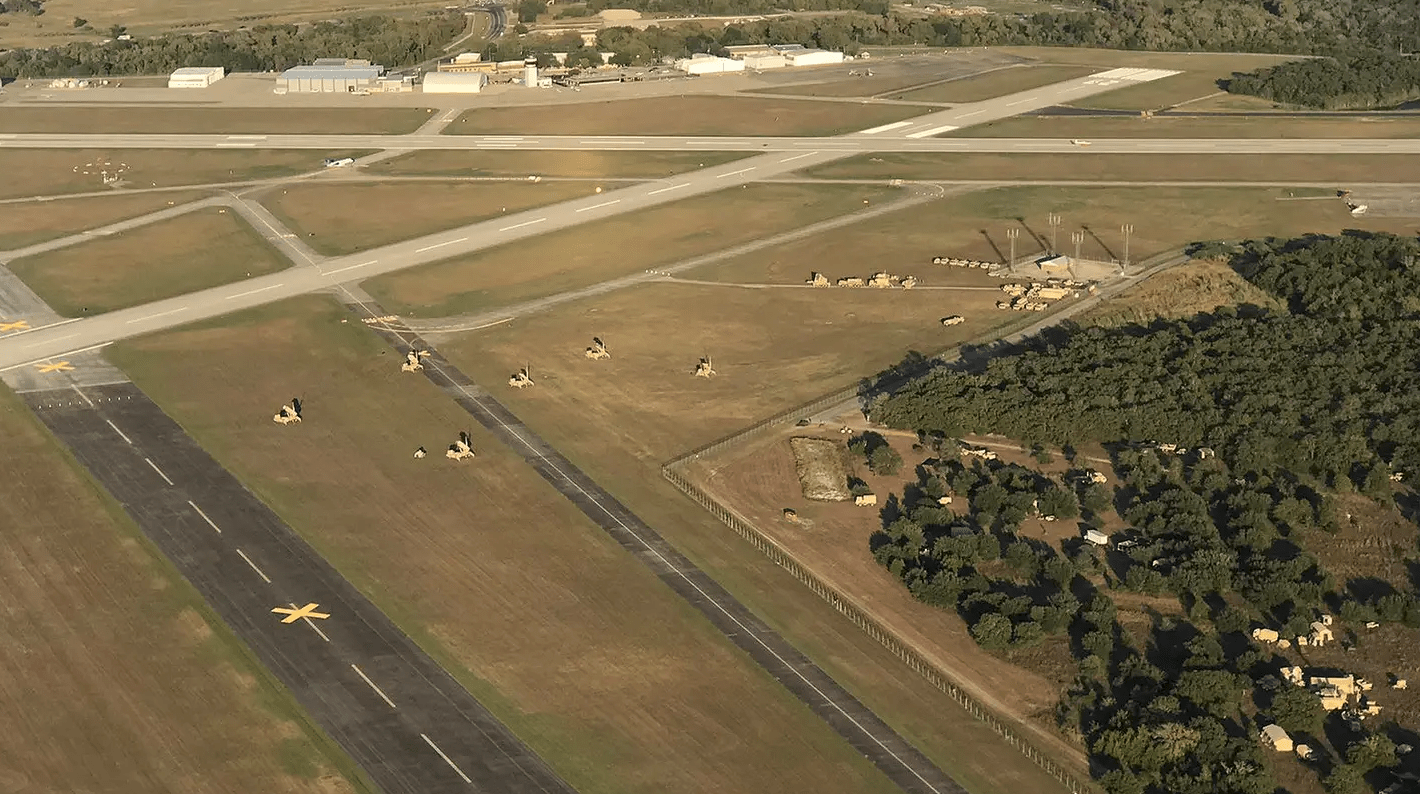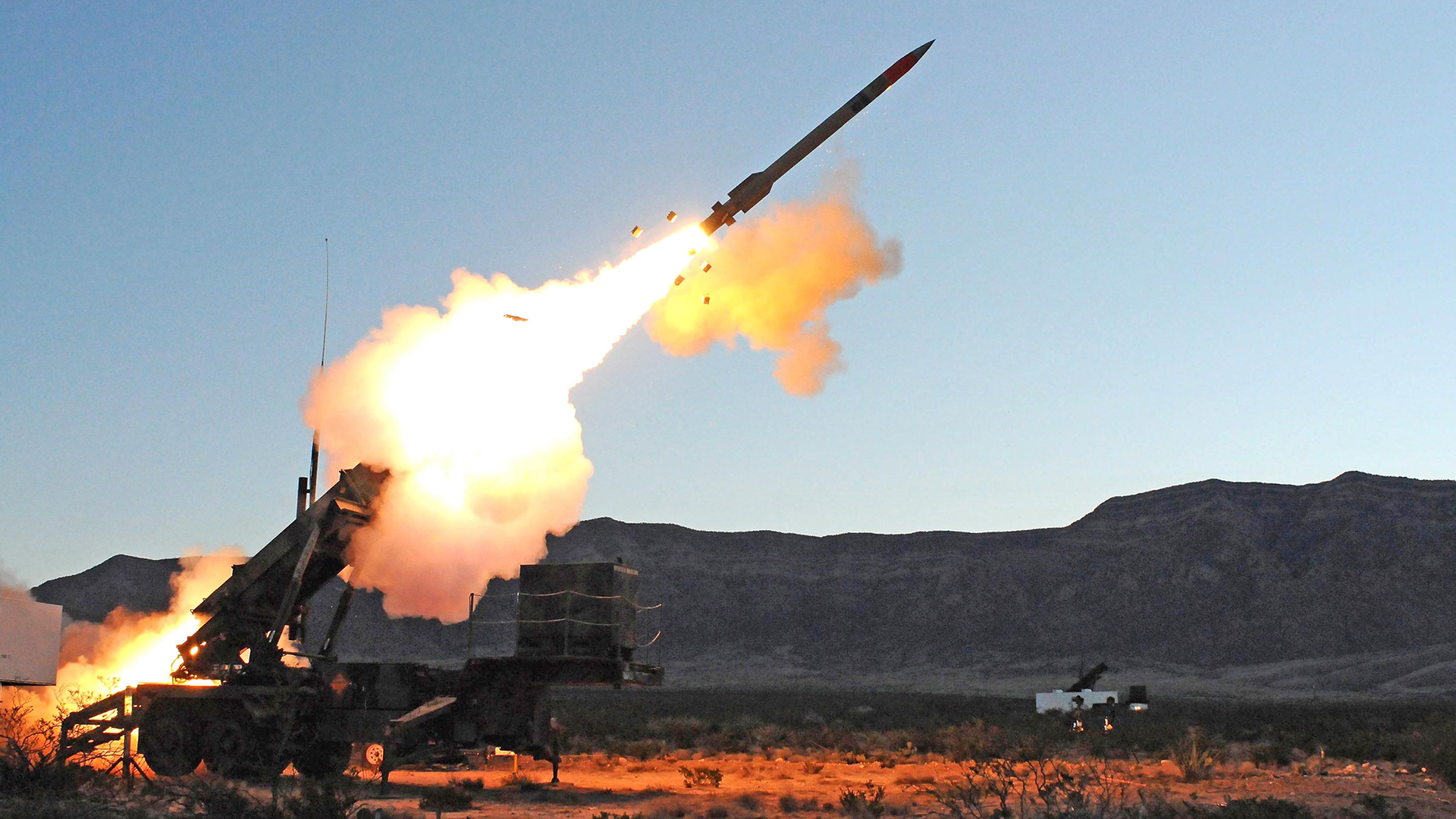Yesterday evening, video began to emerge out of Kyiv showing a massive volley of surface-to-air missiles roaring into the night sky. This came as reports stated that the capital was under an unprecedented degree of aerial standoff attacks. Speculation quickly ran wild that a Patriot system, one of just two donated to the country and just recently put into service, had been hit by a Russian weapon. I jumped on Twitter to try to give some context to what was being seen and its implication and I think now, a day later, it is even more important to share some of it in retrospect. This is especially the case now that several media outlets are reporting at least one of the Patriot batteries was indeed at least damaged in the barrage.
You can read our initial report on the large-scale aerial attack and the air defense response here.
First, as stated last evening, it’s entirely possible that one of the Patriot systems was damaged in the aerial onslaught due to an enemy weapon. It’s also worth remembering that just like any missile system, Patriot interceptors fail, and sometimes they do so right after launch in spectacular fashion. These failures can even damage parts of the battery itself, although that is rare. And sometimes such a failure can look like the battery was hit by the enemy. So claims of a Patriot site being struck due to a flash seen in a video, or some other single piece of vague evidence, are not worth a hard conclusion. On a very active and dynamic battlefield, things explode and sometimes it’s not caused by enemy munitions and sometimes it is.
Second, and far more importantly, is that the possibility of a Patriot system being damaged or destroyed by enemy fire should not come as a surprise at all. From the first time it was uttered that Patriot could be on the table for Ukraine, we made it clear that those systems would become Russia’s top target to which they would assign their most capable weapons. Kinzhal air-launched ballistic missiles would be the top conventional weapon of choice to try to successfully attack those batteries. It was designed, in part, to evade higher-tier anti-ballistic missile defenses. As time went on and the Patriot deal for Ukraine was formally announced, Russia said just as much, that it would be at the top of its targeting list.
So Patriot was always going to be under direct attack just as soon as it arrived and its location was ascertained by Russia. Its radars put out a massive electromagnetic signature that is not hard to detect and geolocate. Even the most nimble configuration of the Patriot system is also quite static and it takes time to move from one location to another. Multiple types of other intelligence, from satellite imagery to informants on the ground, can help geolocate such a large layout in near-real time.
There simply was no doubt that these batteries would become absolute missile magnets, not just for their capabilities and overt value, but also for what they symbolize — increasing support from the U.S. and its allies for Ukraine via the donation of advanced weapons. This is all something of a feature, not just a bug.
Every weapon fired at the Patriot battery is one less weapon Russia can use to hit other targets. And while the Patriot batteries are of very high value, they are also the best-defended locations in the country, so Russia would be spending a lot of its best standoff weapons, an arsenal that is dwindling in size and very hard to replace, just to get a shot at a hit. While Patriot interceptors vary in capability, can be very expensive, and can be depleted fairly quickly, there are thousands in NATO’s collective inventory.
As I stated last night, Russia is doing exactly what we always expected it to do. It would start with basic attempts at taking out the Patriot battery, usually by targeting its radar, with as few advanced weapons as possible. This is precisely what we have seen them attempt to do. Once that didn’t work, they would layer in multiple threats from different attack vectors, which would include air-breathing and ballistic types. So Shahed-136s, various cruise missiles, and Kinzhal and Iskander-Ms, all attacking in a coordinated and well-timed manner in an attempt to overwhelm Ukraine’s air defense network, and especially the Patriot itself.
So none of this was unexpected and damage to a Patriot battery shouldn’t have been either, if indeed that actually occurred.
Remember that a Patriot battery is made up of many elements that can be spread out over a fairly wide area. One unitary conventional warhead from a standoff missile or drone is not going to destroy the whole battery. The enemy’s best bet is to destroy or damage the radar/radars, and in doing so put the battery largely out of action or at least in a degraded remote launch state. If many weapons targeted at a Patriot battery were able to pierce Ukraine’s defensive umbrella then the damage could be more widespread and feature secondaries caused by the interceptors exploding in their box launchers. But that is far less likely than a ‘leaker’ or two getting through and causing limited damage to the finite number of battery elements.

As we have stated many times over the years, air defense, and especially missile defense, is not magic. Far from it. It is not an impenetrable shield. That is a fantasy that has emerged from Hollywood, elements of the mainstream media, outright propaganda, and defense marketing. The Patriot is a very capable system, even in its most basic configuration, but especially so the more deeply it is woven into a larger integrated air defense network. That, however, does not make it a foolproof invisible wall. It can be attacked, overwhelmed, and it can malfunction. In some cases, it can just be down for servicing at an inopportune time and whatever is backing it up, if anything, is just as failable. A complex attack that layers in other threats means that its successful defense may also at least partially rely on other systems, such as lower-tier air defense systems, from NASAMS to drone jamming rifles.
So none of this should be unexpected and it is really just the beginning. The Patriot will continue to be targeted in increasingly complex ways. And yes, we should be prepared to hear that a Patriot battery was damaged or parts of it were destroyed. That is the nature of warfare, especially against an enemy like Russia that still has considerable capabilities and has worked for decades to defeat this exact system.
While Patriot batteries are in far smaller supply than most may think, lost hardware can and likely will be replaced. The trained Ukrainian operators that operate and service it are of higher value, and cannot just be sent from a depot somewhere as attrition replacements.

Finally, we need to remember that the destruction of enemy air defenses (DEAD), an activity that Ukraine and Russia are very active in performing, is a mission, not a capability, weapon, or platform. SAM batteries can be destroyed by small special operations teams on the ground or by a slew of other means. Anti-radiation missiles still remain a threat as well. The bottom line is that Russia is going to try to realize their DEAD objectives in relation to Patriot any way they can and that will likely go beyond lobbing Kinzhals and Shaheds at it as time goes on.
All that being said, the Patriot is just another weapon system. It is not magical. It is not invincible or perfect. But it is critically important, especially now that Ukraine’s Soviet-era long-range air defenses may be down to their last rounds. It also gives Ukraine critical anti-ballistic missile capability to protect its capital from those kinds of attacks, which it really didn’t have before.
By all means, last night was a stress test for Patriot under combat conditions. Some reports state 32 interceptors were launched. The system did an excellent job at repulsing nearly all, and possibly all, of what Russia threw at it, including weapons specifically designed and/or evolved to overcome it. That is bad news for Russia and all that data engagement and sensor data is going to be dissected in incredible detail to make the system even better and to get a clearer handle on what else Ukraine needs in terms of hardware, personnel, and tactics, in order to keep Russia’s barrages at bay.
And when losses in hardware come, which they are likely to do, more hardware can be sent in to replace it. That’s just the nature of the fight at this point. With many advanced Western systems now in Ukraine’s hands, including Bradley Fighting Vehicles to advanced cruise missiles, it’s a reality we need to get used to.
Contact the author: tyler@thedrive.com
